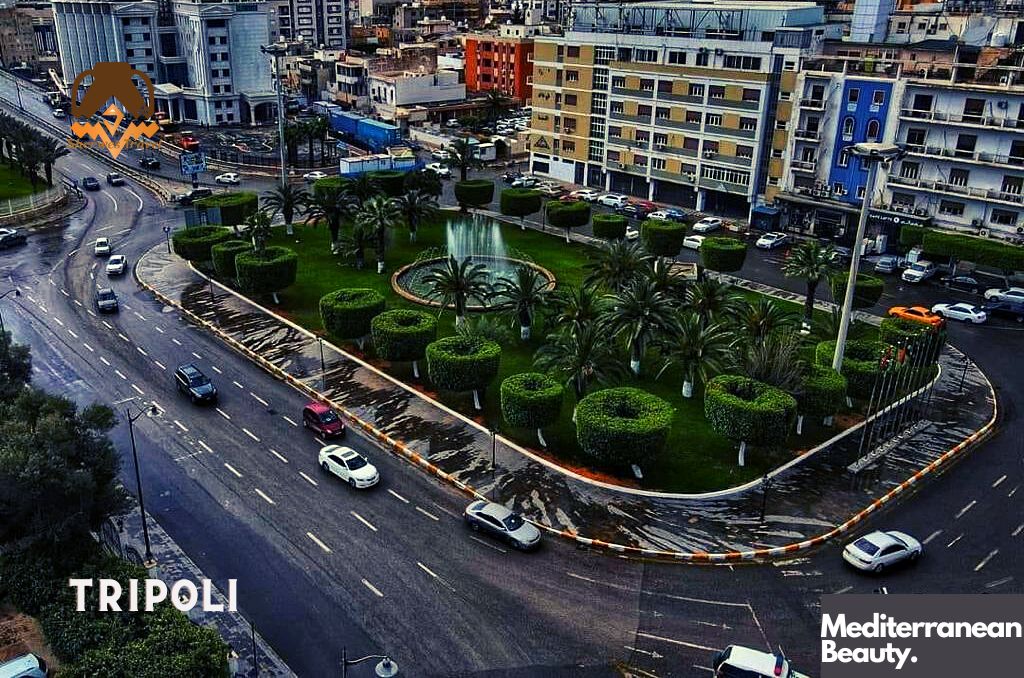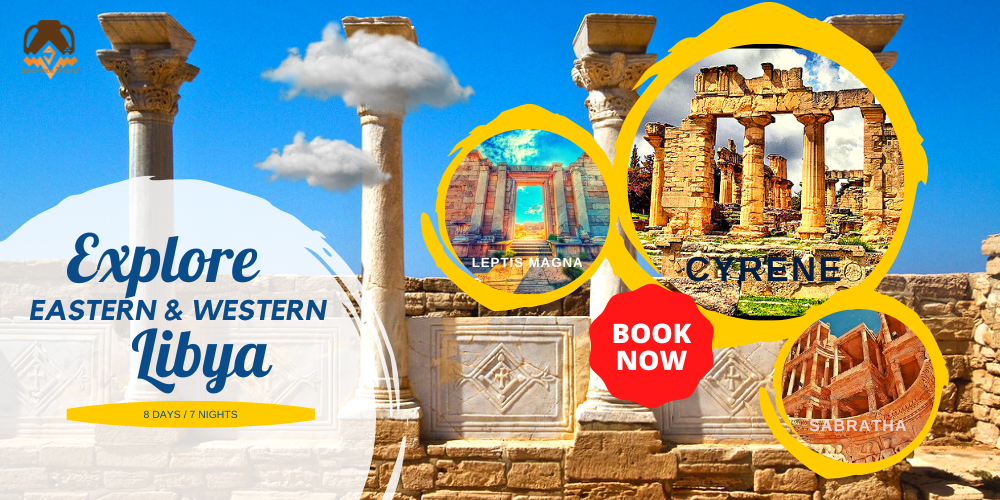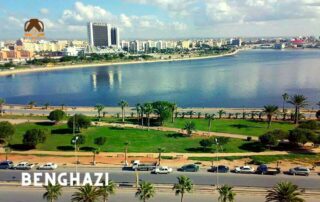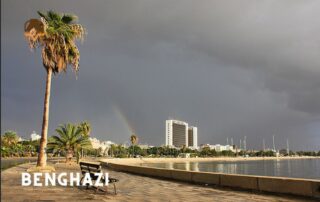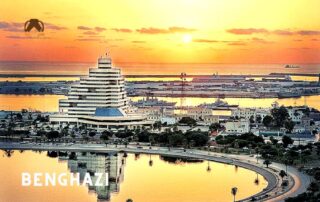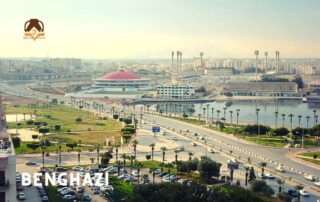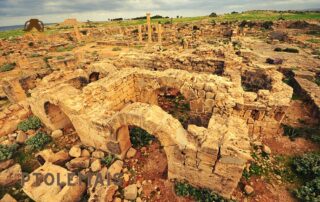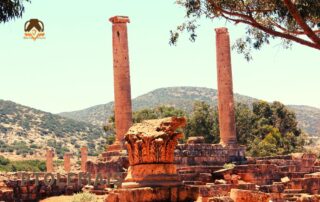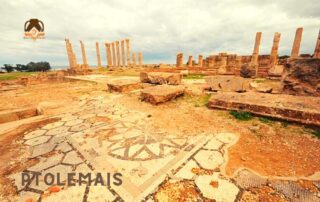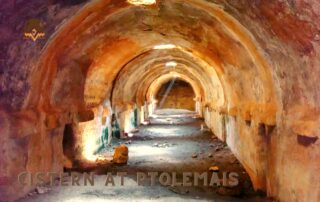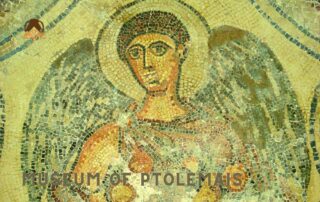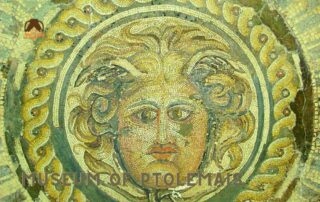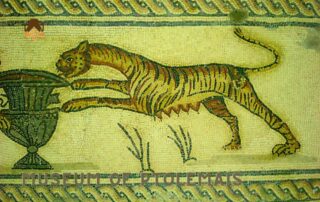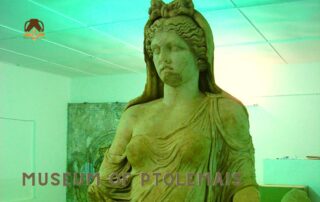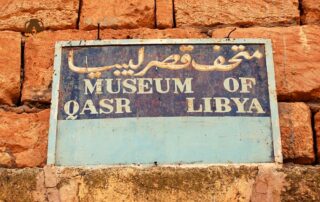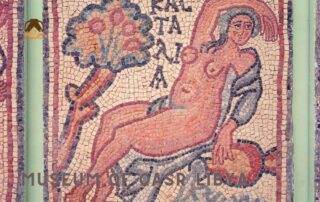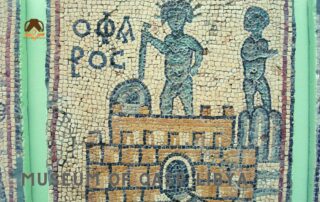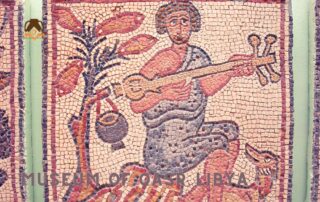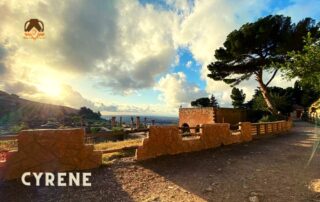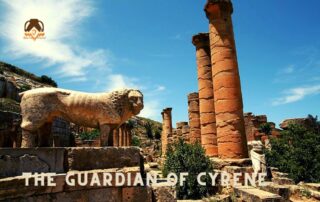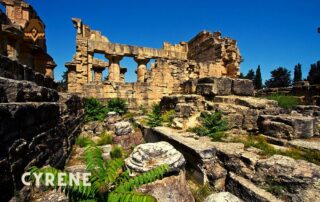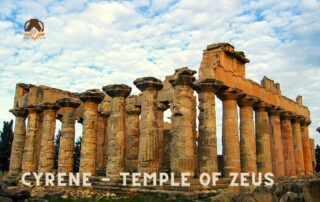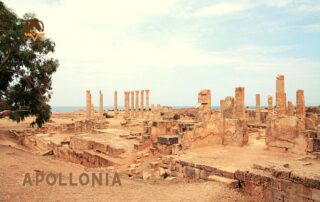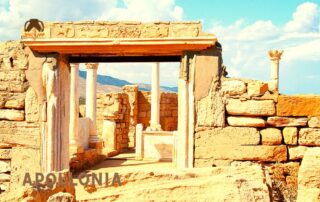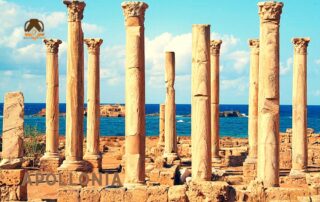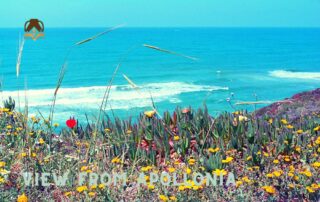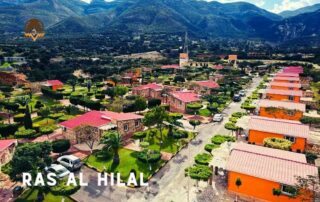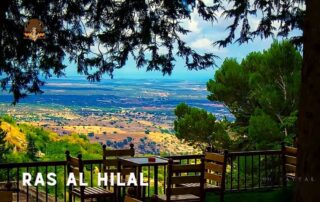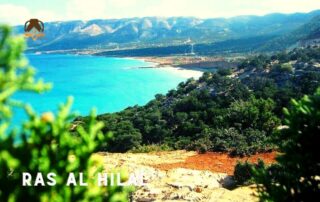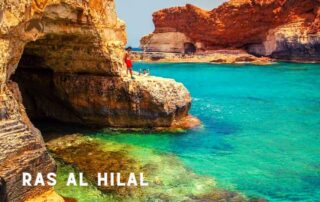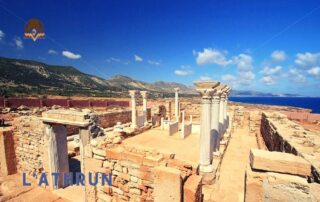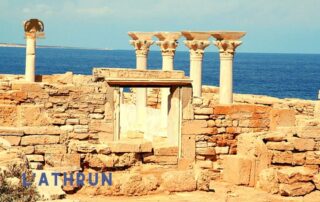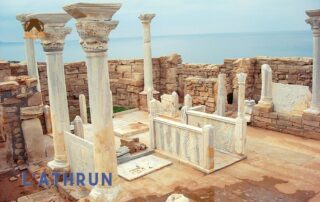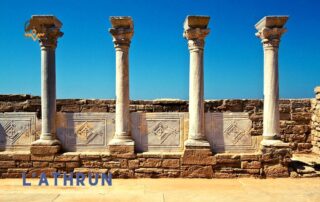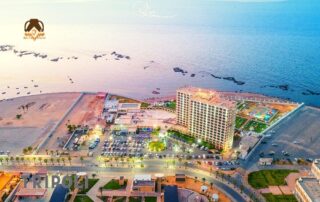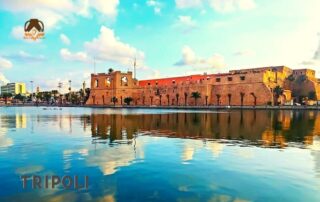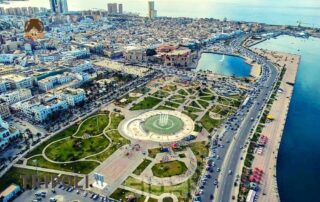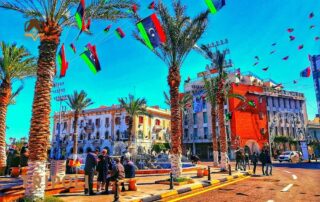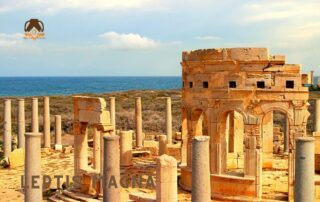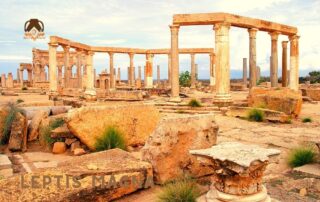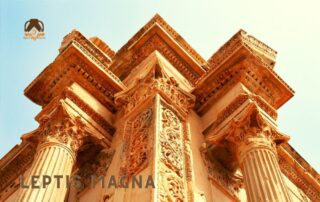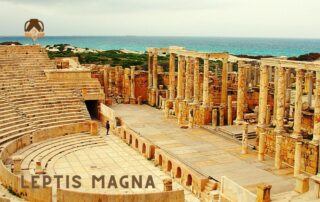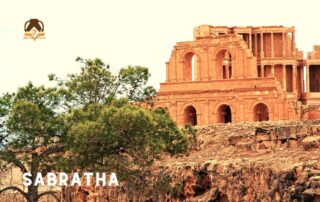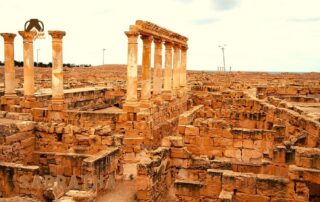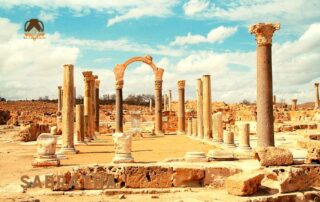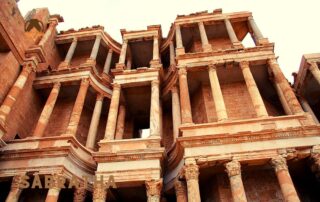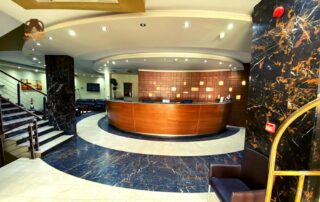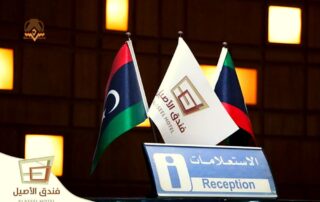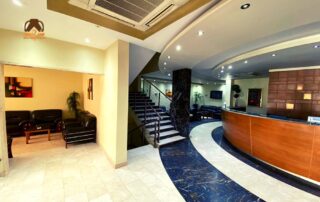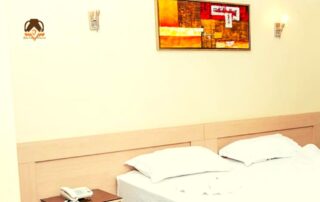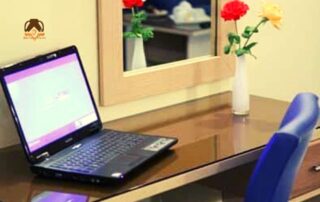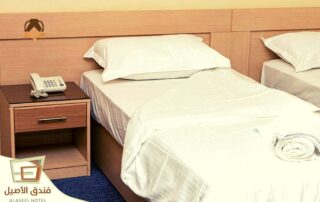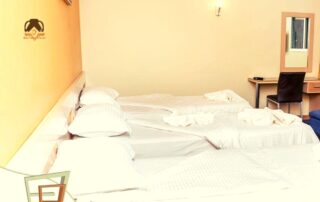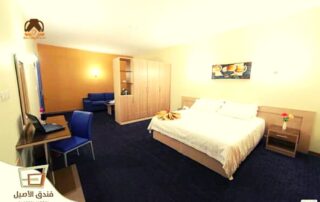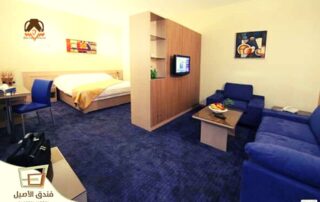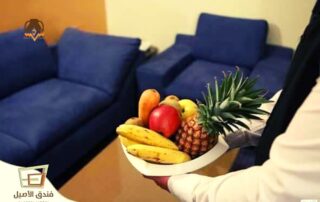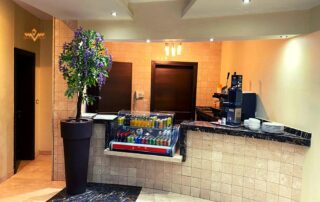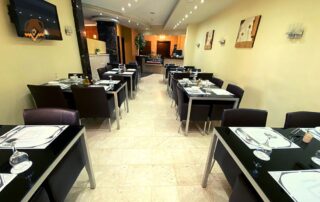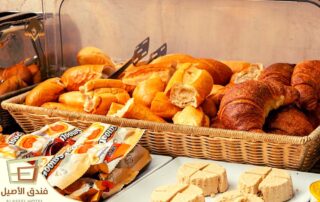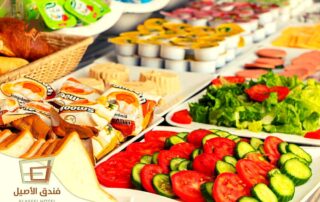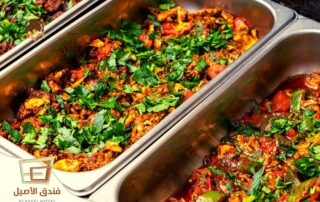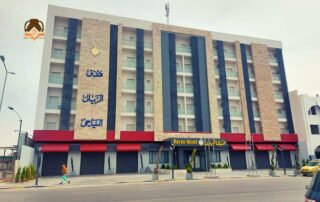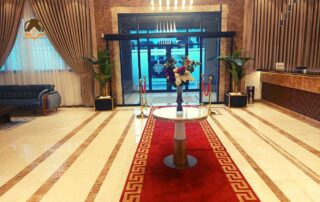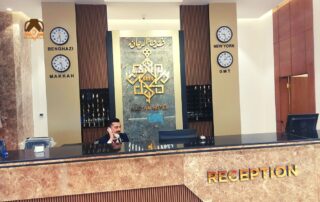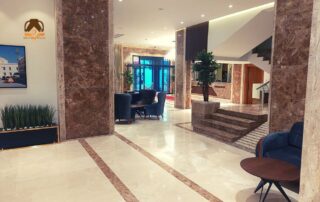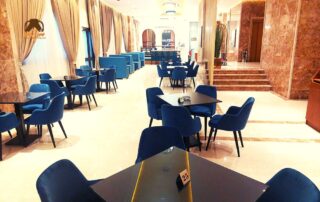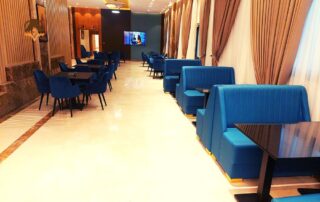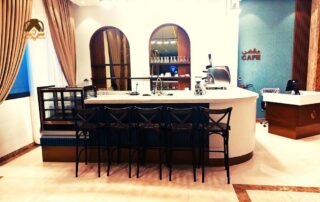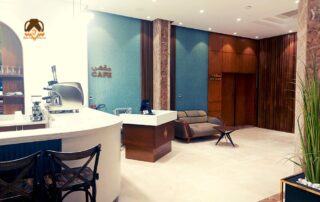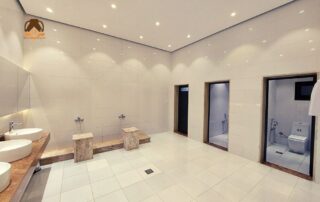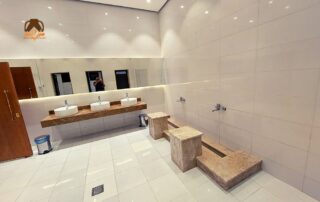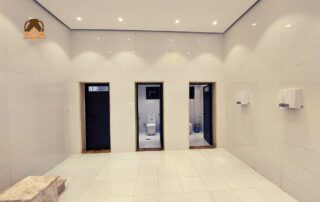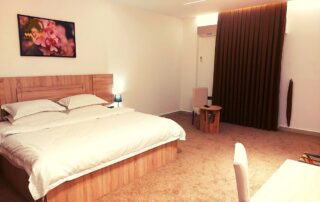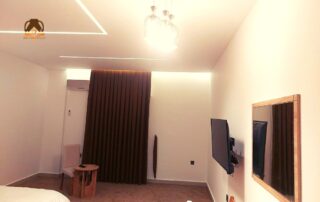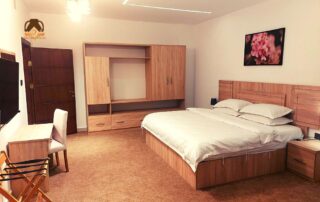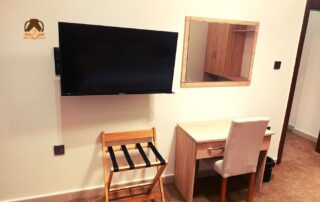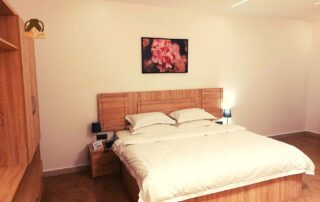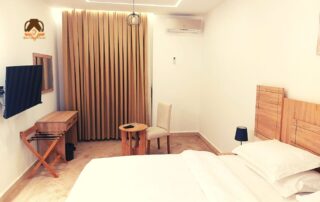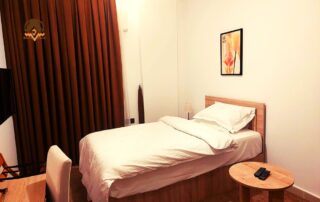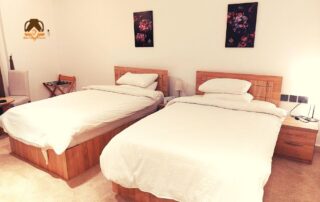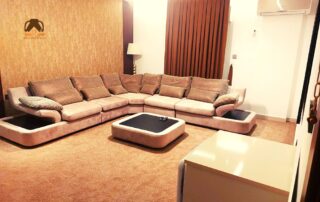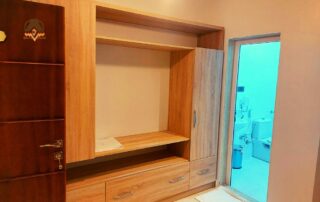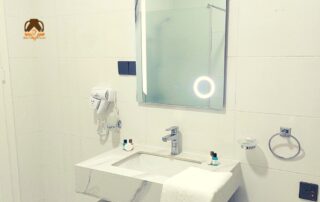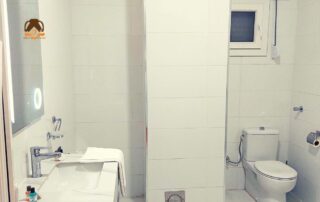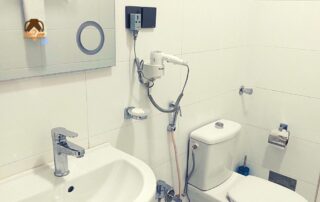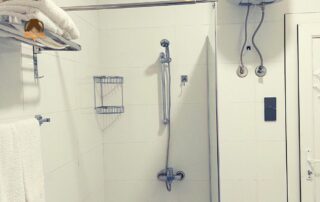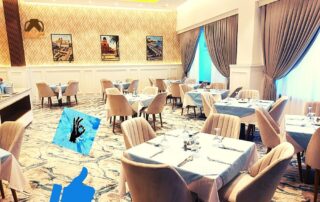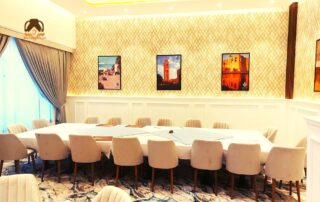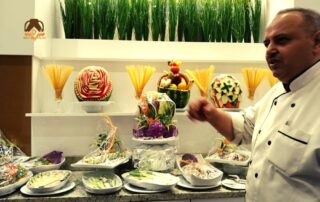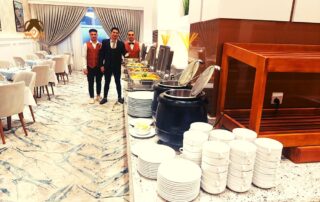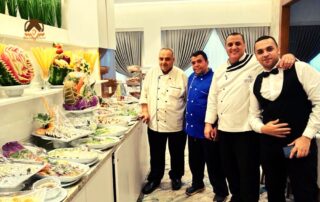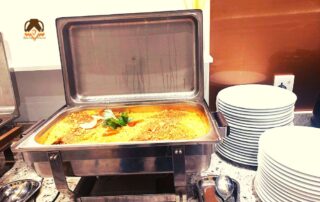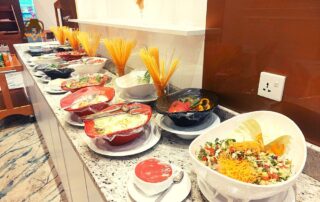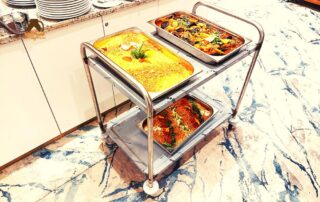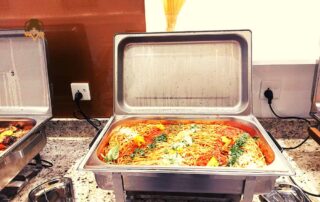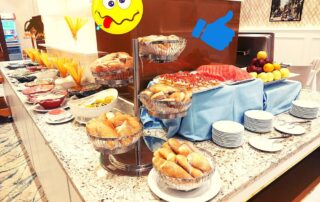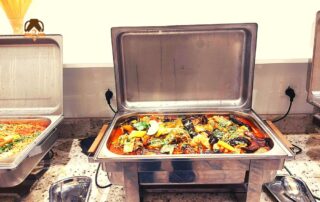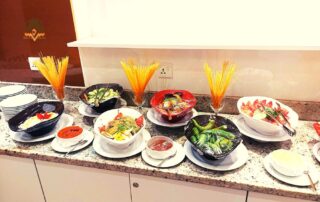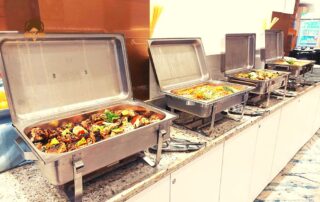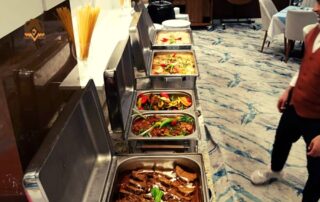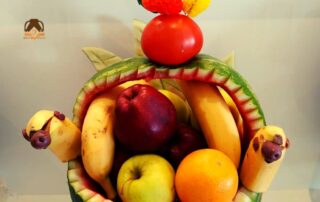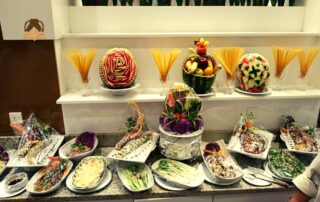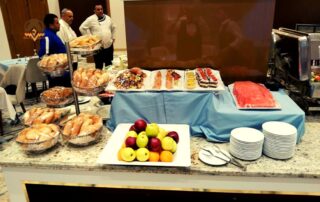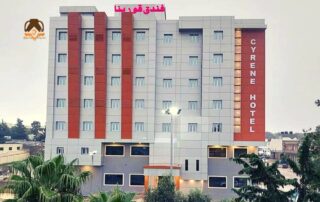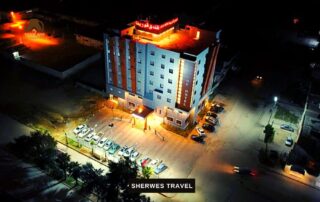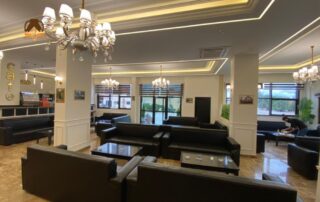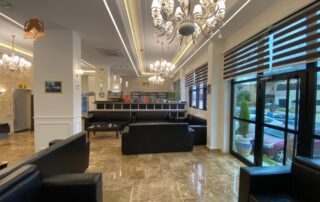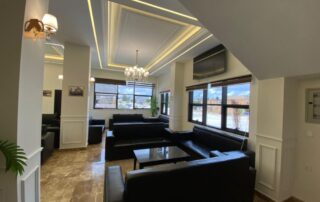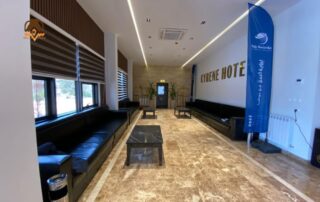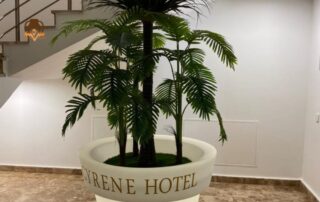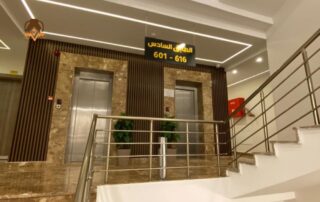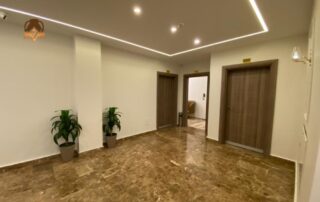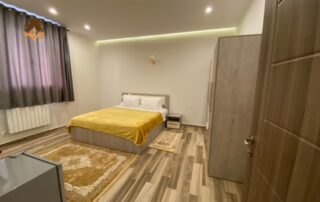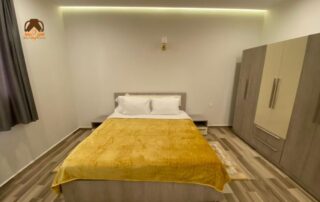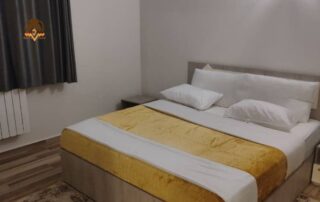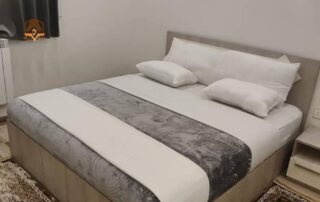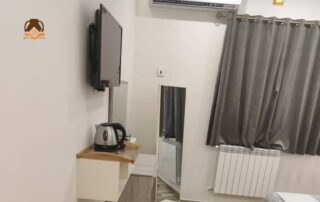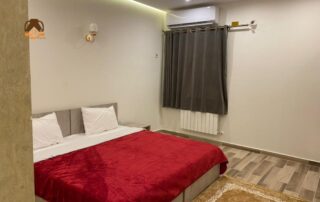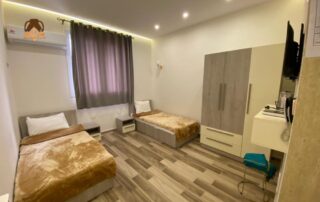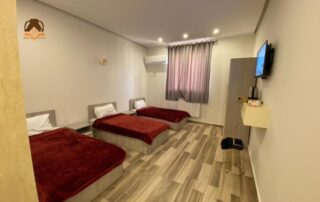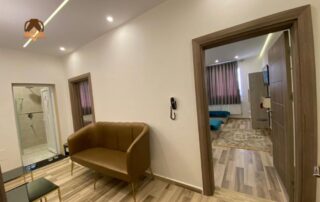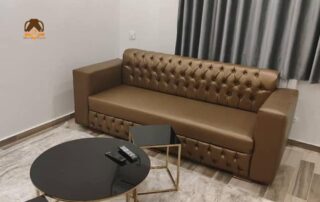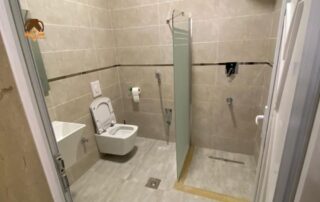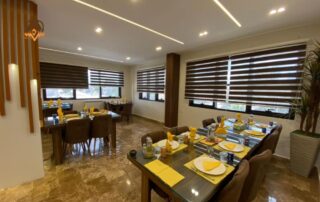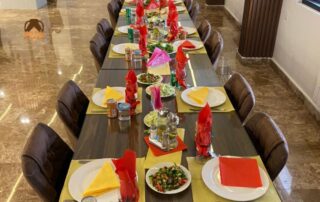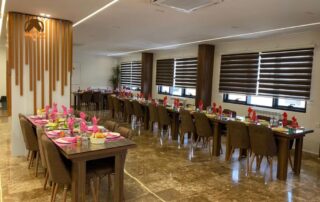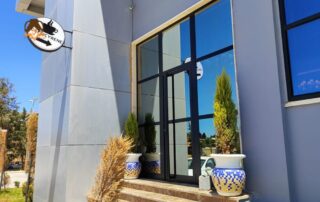SECURITY CLEARANCE $650
Overview
The choices are endless. Libya offers many places to explore, but most people with limited time will want to pick a few key places. We have created an itinerary with the best places and regions to visit—eastern and western regions. So, let’s embark on a journey that promises to leave you with memories to cherish for a lifetime.
Tripoli / Leptis Magna / Benghazi / Ptolemais / Qasr Libya / Cyrene / Apollonia / Ras al Hilal / L’Athrun / Sabratha
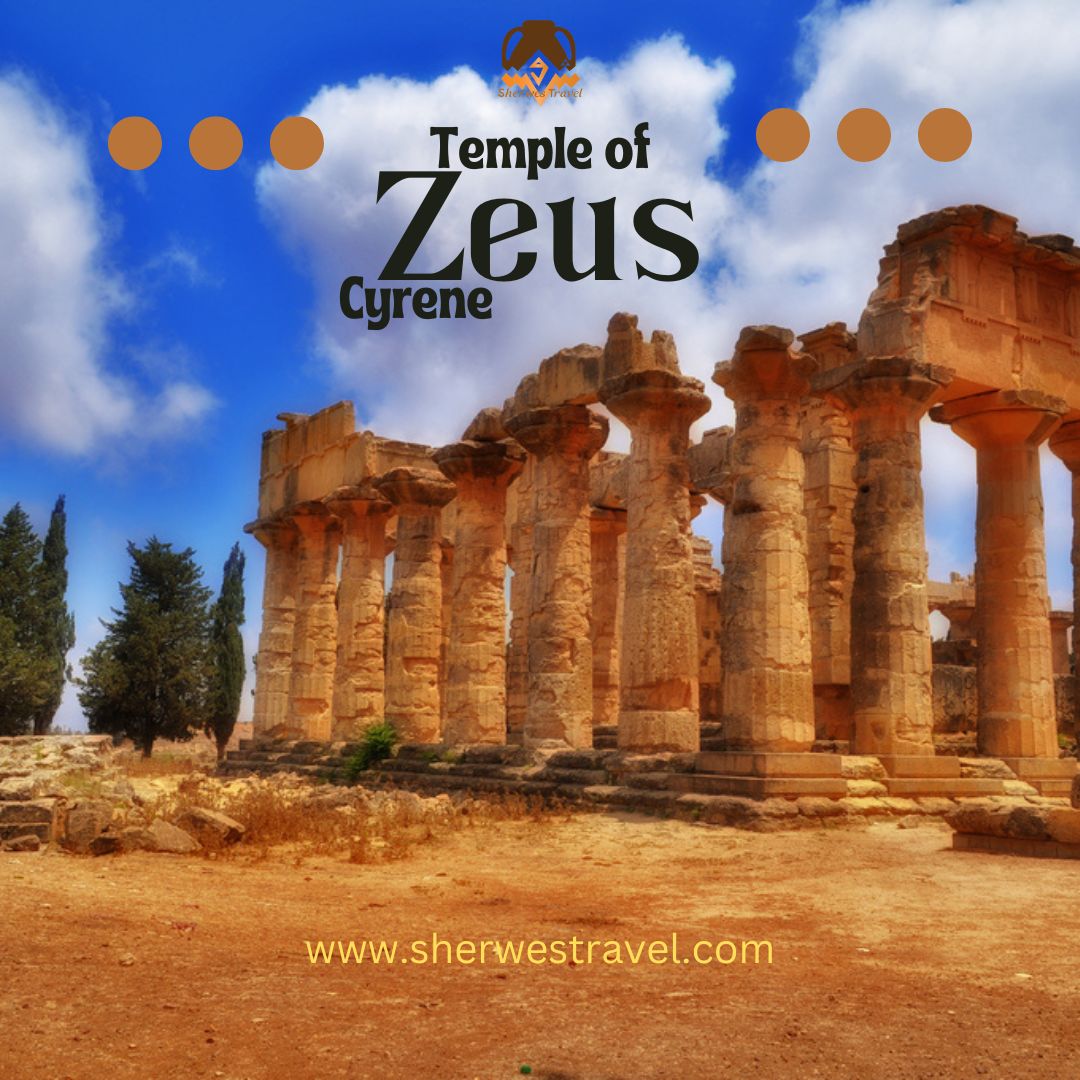
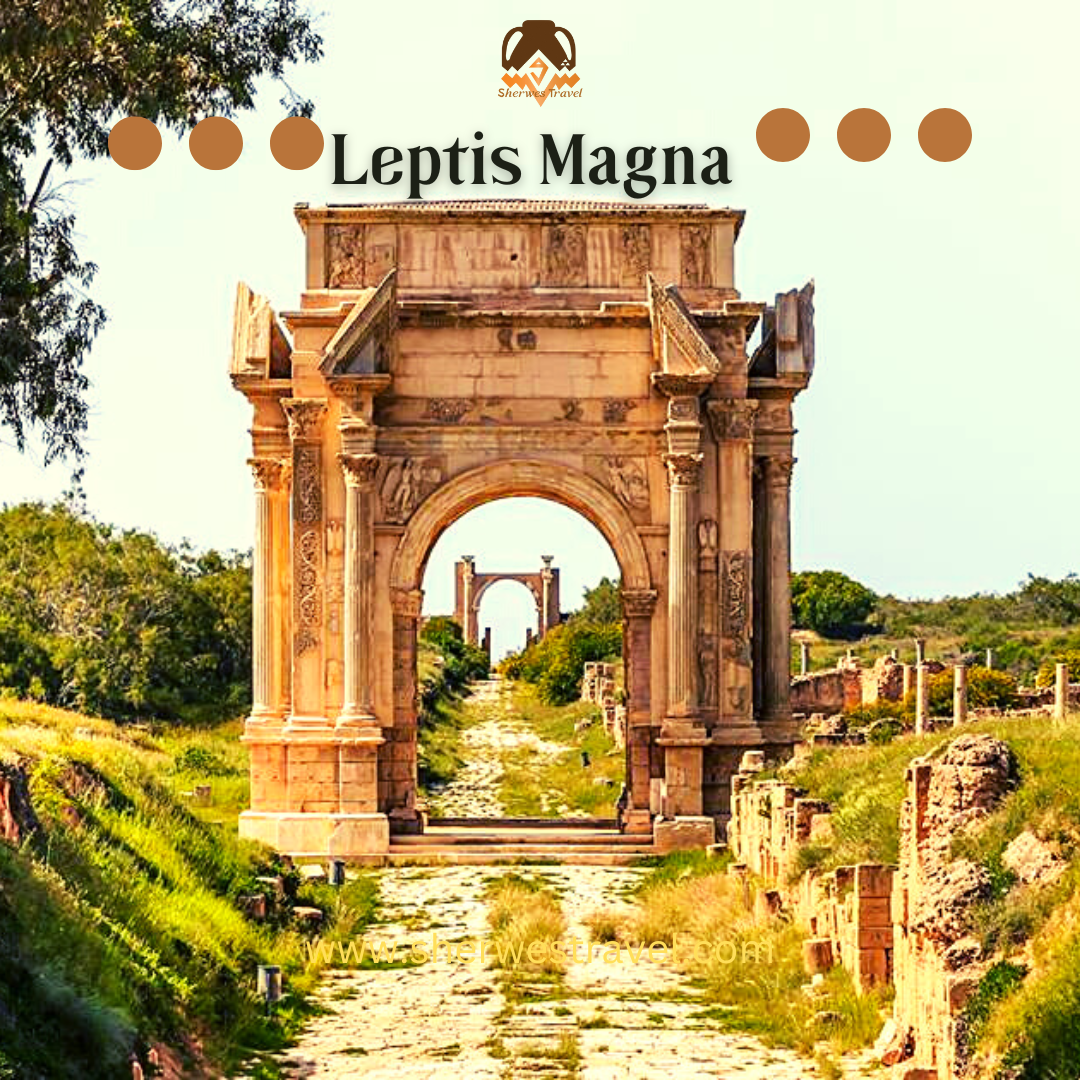
8 Days/7 Nights
Price on request
Highlights of Eastern Libya
Benghazi – Ptolemais – Qasr Libya – Cyrene – Apollonia – Ras al Hilal – L’Atrun
BENGHAZI
- Explore Benghazi, Libya’s bustling second city
PTOLEMAIS
- Stop at Ptolemais and visit the so-called „Royal‟ Tomb or Mausoleum, a tower-tomb of Hellenistic date that stood over 15 meters in height. There is no other tomb of this type or grandeur in the Cyrenaica
QASR LIBYA MUSEUM
- Visit Qasr Libya museum which houses more than 50 pieces of mosaic and artifact fragments dating back to the 6th century A.D. The collection of mosaics is considered one of the world’s finest
CYRENE
- Discover the timeless beauty of Cyrene, a Greek city frozen in time, and marvel at its breathtaking ruins
APOLLONIA
- Visit Apollonia, the wondrous ancient Greek City, the seaport of ancient Cyrene. It lies on the North African coast almost directly south of the western end of Crete
RAS AL HILAL
- Admire Ras al Hilal – Libya’s most dramatic stretch of coastline
Highlights of Western Libya
Tripoli – Leptis Magna – Sabratha
TRIPOLI
- Discover the cultural and historical depth of Tripoli, a modern city filled with remnants of a
grand past
- Discover the cultural and historical depth of Tripoli, a modern city filled with remnants of a
LEPTIS MAGNA
- Enjoy a full day at the magnificent coastal site of Leptis Magna, one of the largest and best-preserved Roman cities in the world
SABRATHA
- Uncover the beauty of Sabratha, which is one of the most visited historical sites in Libya
Itinerary

Our senior local guide will warmly greet you on your arrival at Tripoli Mitiga International Airport. After that, you will be helped and transferred to your hotel. On the drive, you will have your first glimpse of the life of the local people in this capital city along the Mediterranean coast.
Tripoli is Libya’s largest city and is affectionately called “The Mermaid of the Mediterranean.” Its importance was ensured through the centuries by its status as a prime port in the heart of fertile irrigated fields and olive groves, whose grain and oil were exported throughout the Mediterranean by ships that crowded its port.
This historical city has a wealth of old and new monuments and is an important site of Islamic civilization. Libya’s strategic, geographical position and profound history make it a vital link between not only the eastern and western parts of the Arab world but with Europe and Africa as well.
Meal(s) Included: Dinner
Overnight at Alaseel Hotel or similar in Tripoli

Today you will visit one of the highlights of any journey to Libya, the renowned World Heritage Site of Leptis Magna. It is famously known to be the best-preserved and most extensive Roman city in the Mediterranean. Originally a Berber settlement made into a trading port by the Phoenicians; it was conquered in the 6th century B.C. under the Aegis of Carthage. The port city grew wealthy not only from slaves, gold, ivory, and precious metals but also due to the rich agricultural land surrounding it.
Leptis Magna became a great metropolis under the Romans, particularly during the reign of Septimus Severus (193-211 A.D.), born in the city. However, following the end of the Severan Dynasty in 235 A.D., the city fell into decline.
When the Vandals conquered Tripolitania in the mid-5th century A.D., it fell upon Emperor Justinian to reclaim the land for Byzantium. In the 7th century, the Arabs conquered Tripolitania, and Leptis Magna never regained its former glory. Finally, by the 11th century, the city was abandoned to the encroaching sand dunes.
In the 20th century, when serious excavations began, archaeologists found that the sand dunes had preserved the ruins remarkably well. We’ll see the Severan Arch, erected in honor of the emperor’s visit, and the marble and granite paneled Hadrian Baths, the largest outside of Rome. Discover the partially covered Nymphaeum, a shrine dedicated to worshipping nymphs, and the Palaestra or Sports Ground. We’ll also explore the amazingly detailed Severan Basilica, the Theatre, the Circus, and the Amphitheatre, where spectacles were held for the amusement of the populace.
Meal(s) Included: Breakfast, Lunch, Dinner
Overnight at Alaseel Hotel or similar in Tripoli

This morning we will take a tour of Tripoli, founded by the Phoenicians in 1000 B.C. and conquered by the Romans in 106 B.C.
Our tour will start with a walk through the district built during the Italian occupation to see the characteristic architecture of the 1920s and 1930s. Then head to the World War II cemetery in Almansura/Tripoli. Afterward, you’ll visit the 1,369 Commonwealth burials, where we will learn the names, nationalities, ages, and personal memorial quotes of the soldiers put to rest there.
Then, our guide will take you to Al-Saraya Al-Hamra, or the Citadel of Tripoli. It is one of the most important landmarks of the city in Libya. Many rulers made it their headquarters and a center for city administration. These were Libyans and Byzantines, Spanish, Turkish, and Italians. This is not to mention some archaeological artifacts that the castle houses among its flanks.
In the afternoon (dependent on domestic flight schedules), we take a short flight to Benghazi, the second largest city in Libya and a military supply base during World War II. Benghazi was also the headquarters of the Italian forces during their occupation of Libya from 1911 to 1943. You’ll be transferred to a deluxe hotel to freshen up upon arrival. Later, we will head to a fine restaurant for a typical Libyan lunch before visiting the city’s landmarks. This evening we will enjoy dinner at a fine local restaurant.
Meal(s) Included: Breakfast, Lunch, Dinner
Overnight at Al Ryan Hotel or Similar

A morning drive along the coastal road takes us to Ptolemais, the former capital of Pentapolis. Named after Ptolemy III and originally a Hellenistic mercantile city, Ptolemais was founded in the 3rd century B.C. Its importance eventually increased following the acquisition of Cyrenaica by the Romans in 96 A.D.
Ptolemais enjoyed the prosperity that characterized this era of the Roman Empire. As a result, extensive public works programs were put into place for the upscale citizenry of this flourishing city. During the 3rd century A.D., following a decline of nearby Cyrene, Ptolemais became the region’s capital city. Like Cyrene, it was affected by the earthquake of 365 A.D., after which a reconstruction period followed.
In the 6th century A.D., Apollonia became the capital of Upper Libya when the water supply system of Ptolemais failed. The downfall of Ptolemais was completed after the Arab conquest of Cyrenaica in the 7th century A.D.
After our tour of Ptolemais, we’ll continue through the pleasant Green Mountain to Qasr Libya, where we’ll visit an interesting museum that houses more than 50 pieces of mosaic and artifact fragments dating back to the 6th century A.D. The collection of mosaics is considered one of the world’s finest and, intriguingly, depicts pagan subjects and human and animal figures. One panel depicts the Pharaoh Lighthouse, one of the Seven Wonders of the Ancient World.
Lunch will be at Albayda, the capital city of the Green Mountain district. After lunch, we will head to the Cyrene Hotel, a few steps from the site in Cyrene, where we’ll stay for the next two nights.
Meal(s) Included: Breakfast, Lunch, Dinner
Overnight at Cyrene Hotel or similar in Cyrene

Built on a series of levels, the spectacular ruins of Cyrene are only partially excavated. Walking, we may discover a mosaic or statue long forgotten underneath the sand. Starting from the top of the hills, we will visit the Agora quarter with the gymnasium, forum, Roman basilica, the Temple of Demetra, and Batthus Tomb. Afterward, through a narrow path, you will descend to the Temple of Apollo, the principal building of Cyrene. The temple was built as early as the 7th century B.C. and rebuilt three centuries later. Nearby lies the Fountain of Apollo, whose water was used for healing properties. The Great Baths are in exceptional condition, and inside the Grand Hall, the pipes carrying water from the Fountain of Apollo are still visible. The amphitheater is Roman, but its foundations and style are Greek.
Later we’ll explore the site of Apollonia and the traditional village of Sousa. Here, our visit includes a detailed viewing of the Greek Theatre in a particularly picturesque location by the sea. Other highlights include the Roman baths, the Eastern, Central, and Western Basilicas, and the Byzantine Palace, a government building in the 6th century A.D.
Established in the 7th century B.C., Apollonia was the port of Cyrene and continued to be so for more than a millennium. Its importance was such that it remained autonomous from Cyrene during the Roman period and even surpassed it as the region’s major city in the 6th century A.D.
Meal(s) Included: Breakfast, Lunch, Dinner
Overnight at Cyrene Hotel or similar in Cyrene

This morning we will drive through some of the coast’s most spectacular scenery, visiting two atmospheric churches by the sea, Ras al Hilal and L’Athrun. The early Christian site of Ras al Hilal has a three-nave church situated on one of the most spectacular spots on the coast.
At the often-overlooked site of L’Athrun, we’ll have the rare chance to see a superb Byzantine Basilica where the original marble floor remains intact, and the Corinthian columns showcase crosses carved into them.
After lunch, we will return to Benghazi (or Labraq airport) for our flight to Tripoli, where you will stay overnight.
Meal(s) Included: Breakfast, Lunch, Dinner
Overnight at Alaseel Hotel or similar in Tripoli

Your Libyan experience starts with a tour to Sabratha, located on the Mediterranean coast about one hour and a half drive west of Tripoli. In Roman times, the Tripolitania Province had three cities, Leptis Magna, Oea (now the modern Tripoli), and Sabratha. Among all the coastal sites, Sabratha stands out as the most beautiful. A World Heritage Site, Sabratha was founded by the Canaanites in the 6th century B.C. and ruled by Carthage, Phoenicia, Numedia, and Rome in 46 B.C.
The most spectacular site in Sabratha is the theatre, built during the reign of Emperor Commodus (161-192 A.D.) with its three-story backdrop of columns; it remains in use today as an arena for both theatre and concerts. Other monuments and areas of interest include the Temple of Liber Pater, the Basilica of Justinian, the Capitolium, the Temple of Serapis, the Temple of Hercules, and the Temple of Isis. After a day immersed in the region’s history, return to Tripoli in the afternoon.
After lunch, Start your exploration of the old town of Tripoli. The many historic mosques and the lively medina (walled city) display features typical of Afro-Mediterranean towns.
There are several interesting mosques in the old town, and you will visit the best known, the elegant Gurgi Mosque, first constructed in 1833. Other points of interest are the Arch of Marcus Aurelius and Santa Maria degli Angeli church, the oldest church in Tripoli, which today still offers a service of worship for its people.
A unique feature of Tripoli’s architecture, when walking through the medina, it is typical to come across Roman columns that have been reused as building material. The medina in Tripoli is one of the classical sites of the Mediterranean where the basic street plan was laid down in the Roman period when the walls were constructed and have changed little in the interim period.
Continue the tour and stroll through the souks, which provide the best shopping in the city. As still, only very few tourists visit Libya, the souk is authentic as it gets and caters to local tastes. North African handicrafts include silver and gold jewelry, silks, carpets, rugs, pottery, and items made from camel skin. Most places have fixed prices, and the souks are wonderful places to see weavers, coppersmiths, leatherworkers, and jewelers ply their trades.
Meal(s) Included: Breakfast, Lunch, Dinner
Overnight at Alaseel Hotel or similar in Tripoli

After breakfast, transfer to Mitiqa International Airport for your flight after an unforgettable tour. (B)
Accommodation in Tripoli – Al Aseel Hotel
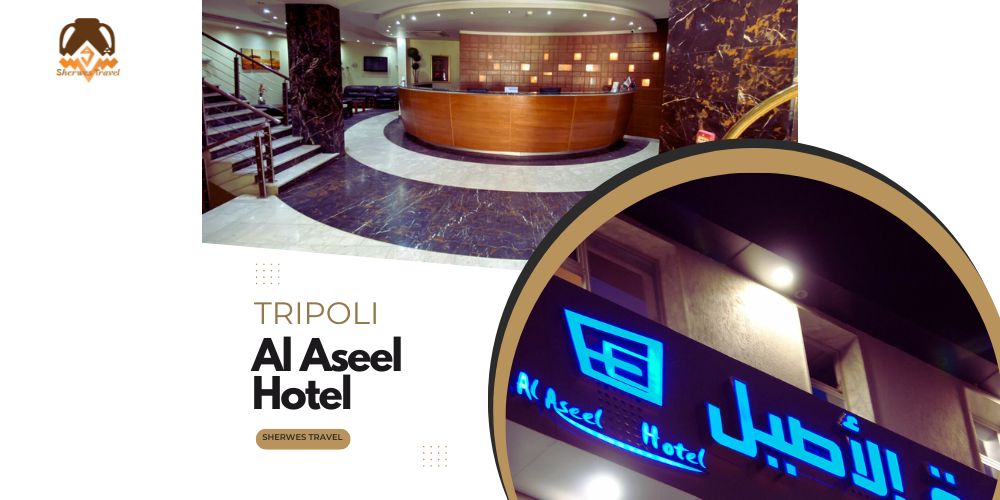
Al Aseel Hotel
Enjoy the convenience of staying at the Al Aseel Hotel
A warm welcome
We warmly welcome all our clients who booked tours with us to the Al Aseel Hotel.
Al Aseel Hotel provides all the amenities to give you an excellent stay
The hotel has a 24-hour front desk, modern rooms, a restaurant, and a café
Wireless Internet access in all rooms and suites, meeting areas, and public spaces
The hotel is less than ten minutes away from Mitiga Airport (Tripoli)
Parking lot in front of the hotel
Accommodation in Benghazi – Rayan Hotel
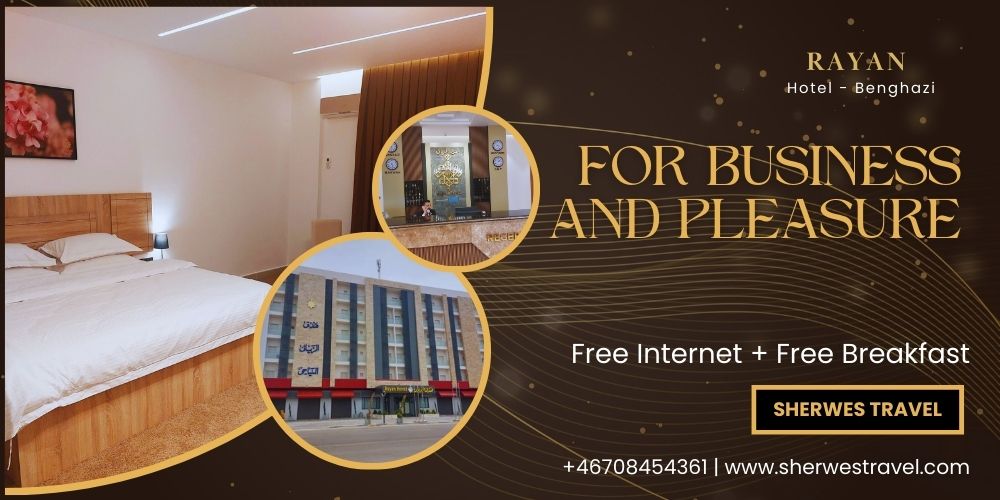
Rayan Hotel
Rayan Hotel is an integrated hotel with over 70 rooms and 10 suites and offers guests various accommodation services.
The hotel also has a meeting hall, and their Cyrene Restaurant and Café are open around the clock.
Rayan Hotel gets complete customer satisfaction regarding cleanliness, treatment, available services, and room comfort.
Accommodation in Cyrene – Cyrene Hotel
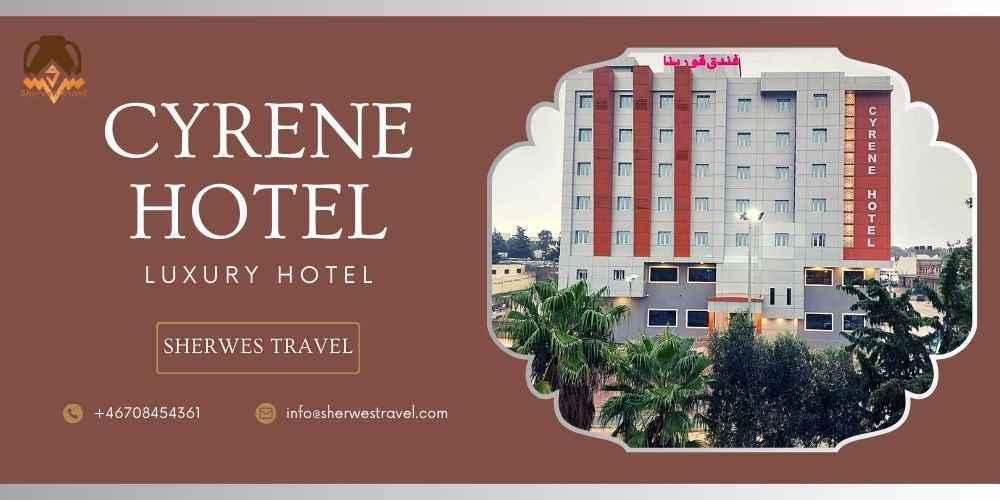
Cyrene Hotel
Cyrene Hotel is newly opened. It is the biggest and best hotel in Cyrene. It features excellent service and elegant décor.
It provides all the amenities to give you an excellent stay.
The hotel gets complete customer satisfaction regarding cleanliness, treatment, available services, and room comfort.
Services included in the tour
Airport assist and transfer from/to Tripoli Mitiga International Airport (MJI)
Transfer by a private air-conditioned vehicle
Domestic airlines ticket (Tripoli/Benghazi/Tripoli)
Accommodation: 04 nights in Tripoli, 01 night in Benghazi, and 02 nights in Cyrene
All meals and coffee breaks
Transportation
English speaking local guide
Entrance fees all museums and sites
Services not included in the tour
Visa approval fee through the Department of Passports to visit Libya. This fee must be paid in advance before submission
International Flights (We can issue 2-way tickets through Tunis or Istanbul on your request)
Extra services in hotels such as phone calls, laundry, and room service…Etc
Services are not specifically stated in the itinerary
Personal spending
Libyan embassies visa fees


